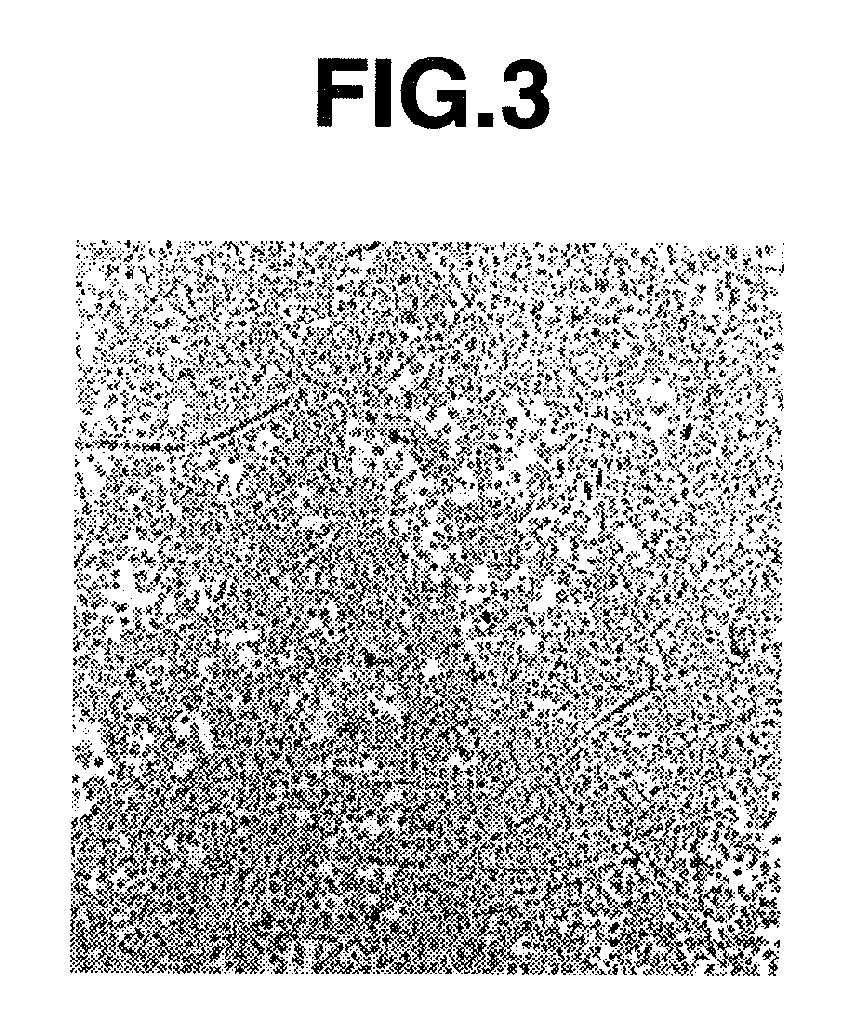Charge-transporting varnish
a charge-transporting varnish and charge-transporting technology, which is applied in the preparation of isocyanic acid derivatives, non-metal conductors, corona discharge, etc., can solve the problems of low conductivity, low uniformity, and difficulty in film formation ensuring high uniformity, and achieve high solubility and non-aggregation properties, good filterability, and high synthesis yield
- Summary
- Abstract
- Description
- Claims
- Application Information
AI Technical Summary
Benefits of technology
Problems solved by technology
Method used
Image
Examples
synthetic example 1
Synthesis of Oxidized Phenyltrianiline
[0150]According to the following procedure, oxidized phenyltrianiline (hereinafter abbreviated as ox-PTrA) was prepared through phenyltrianiline (hereinafter abbreviated as PTrA) prepared by use of 4-hydroxydiphenylamine (hereinafter abbreviated as HDPA) and 4-aminodiphenylamine (hereinafter abbreviated as ADPA).
[0151]
[1] First Step
[0152]HDPA (made by Tokyo Kasei Kogyou Co., Ltd.) and ADPA (made by Tokyo Kasei Kogyou Co., Ltd.) were, respectively, subjected to reduced distillation under heating (HDPA: 187 to 188° C., ADPA: 185 to 188° C.) by use of a vacuum pump and allowed to cool and the resulting crystals were used for the reaction.
[0153]Dehydrated toluene (550 ml) was added to 50.36 g (0.2719 mol) of HDPA and 50.04 g (0.2716 mol) of ADPA, followed by dissolution by heating to 90° C.
[0154]On the other hand, a mixed solution of 138.80 g (0.4078 mol) of Ti(O-n-Bu)4 (made by Kanto Chemical Co. Inc.) and 61.26 g (0.4079 mol) of p-tolyl acetate (m...
example 1
Charge-Transporting Varnish
[0176]To a mixture of 100 mg (0.286 mmol) of ox-PTrA obtained in Synthetic Example 1 and 218 mg (0.859 mmol) of 5-sulfosalicylic acid dihydrate, 1.79 ml of DMAc was added, followed by dissolution under stirring at room temperature. To the solution, 5.31 ml of cyclohexanol melted by heating up to 50° C. was added and stirred to obtain greenish black transparent solution. The thus obtained solution was filtered through a PTFE filter (MX-13P with a diameter of 13 mm, made by Showa Denko K.K.) having a pore size of 0.2 μm, whereupon filtration was possible without clogging to obtain a greenish black transparent charge-transporting varnish. From this result, it will be seen that ox-PTrA has good solubility in a solvent (cyclohexanol / DMAc (3:1)) and good filterability. When the thus obtained charge-transporting varnish was stored for one day at −25° C., no solid precipitation was found.
example 2
Charge-Transporting Varnish
[0177]The greenish black transparent solution obtained in Example 1 was provided as a charge-transporting varnish without filtration with the PTFE filter.
PUM
| Property | Measurement | Unit |
|---|---|---|
| temperature | aaaaa | aaaaa |
| temperature | aaaaa | aaaaa |
| thickness | aaaaa | aaaaa |
Abstract
Description
Claims
Application Information
 Login to View More
Login to View More - R&D
- Intellectual Property
- Life Sciences
- Materials
- Tech Scout
- Unparalleled Data Quality
- Higher Quality Content
- 60% Fewer Hallucinations
Browse by: Latest US Patents, China's latest patents, Technical Efficacy Thesaurus, Application Domain, Technology Topic, Popular Technical Reports.
© 2025 PatSnap. All rights reserved.Legal|Privacy policy|Modern Slavery Act Transparency Statement|Sitemap|About US| Contact US: help@patsnap.com



